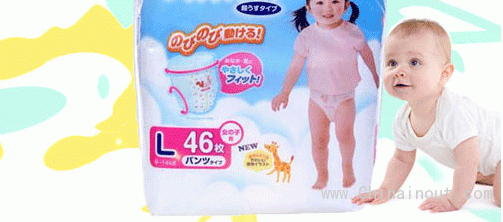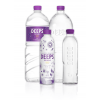
2013年7月開始,,上海,、重慶、杭州,、寧波、鄭州,、廣州,、深圳等16個試點城市先后開展跨境電商進出口業(yè)務(wù),。如果按照一般貿(mào)易進口的稅收政策,可能要繳納30%至50%的稅,,但跨境電商試點后,,就能降到10%。
以奶粉為例,,如果是貿(mào)易商正常渠道進口,,其關(guān)稅約8%,增值稅為17%,,綜合稅率在25%左右,,而跨境電商平臺僅對消費者收取10%的行郵稅,且行郵稅在50元以下的免征(即訂單單筆消費在500元以內(nèi)的訂單),。
目前,跨境電商主要采取自貿(mào)區(qū)的保稅進口模式或海外直郵模式入境,,而各家力推的是和保稅區(qū)合作的模式,。由于保稅區(qū)只收取行郵稅,,解決了以往的價格痛點,。
不過,跨境電商大躍進之時,,也面臨不少問題,。
盡管跨境電商上都是母嬰,、奢侈品這些看上去利潤高的品類,但在目前高度“殺價”的背景下,,這仍然是一張沒有利潤的大餅。例如,,紙尿褲在電商領(lǐng)域平均毛利只有3%,,不少平臺比3%還低,。“在日本賣1300日元(折合人民幣68元)的紙尿褲,在國內(nèi)電商平臺上賣138元到148元,,但是毛利卻只有3%,,原因是經(jīng)銷關(guān)系層層加價,。”蜜芽寶貝CEO劉楠說。
貨源也是個問題,。還是以紙尿褲為例,,貨到中國電商手里之前,,要經(jīng)過日本貨源、日本出口商,、中國進口商,、批發(fā)商,、中間商、零售商,。日本貨源主要有三種,,一種是批發(fā)商社,,日本很多品牌方不對貿(mào)易公司也不對零售商供貨,,必須經(jīng)過批發(fā)商社,;第二種是零售門店,很多中國電商賣的貨,,都是從日本最大嬰童店阿卡佳掃出來的,;第三種是掃貨公司,,前兩個渠道貨不夠的時候,,只要加價,就會有掃貨公司在市面上幫你把貨物掃過來,,這在日本已經(jīng)成為產(chǎn)業(yè)鏈,。
另外,跨境電商也無法保證自己的貨源真的是正品,。據(jù)劉楠透露,平臺性質(zhì)的跨境電商主要吸引了中國的進口商,、批發(fā)商和中間商入駐,,但一個最麻煩的問題是,,跨境電商并無法確定入駐的貨源是否為正品,,只能確定這批貨來自哪家中國進口商、哪家日本出口商,,而一旦售假,,勢必對跨境電商造成負面影響。(中國進出口網(wǎng))
From July 2013, 16 pilot cities like Shanghai, Chongqing, Hangzhou, Ningbo, Zhengzhou, Guangzhou and Shenzhen has launched cross-border e-commerce business. According to the general trade import tax policy, the tax of the imported products may reach 30%-50%, but at the cross-border e-commerce pilots, the tax can be reduced to 10%.
Take baby formula for example, if the traders import baby formula through normal channels, they need to pay tariffs of about 8%, added value tax 17%, the combined tax rate 25%, while through the cross-border e-commerce platform, consumers only need to pay tax of 10%, moreover, if the amount of 10% tax is less than 50 yuan, (ie, single order consumption is less than 500 yuan), the tax won’t be paid.
Currently, cross-border e-commerce companies mainly adopt bonded import mode or overseas direct mail mode, and these companies prefer bonded import and the cooperation with FTZ, because at FTZ, the tax will be lower, thus the product price will be lower.
However, the cross-border e-commerce companies, are also facing a lot of problems.
Although the main product line at the cross-border e-commerce platform are the products for mother and baby and luxuries and other products that look highly profitable, in the current background of the "bargain", it is still a pie of no profit. For example, the average gross profit of diapers in the field of e-commerce is only 3%. "In Japan the diaper cost 1,300 yen, (equivalent to 68 yuan), while at China’s e-commerce platforms, the diaper sells at the price of 138 yuan to 148 yuan, the gross profit is only 3%, due to the too many distribution channels." The miyabaobei CEO Liu Nan said.
The source of goods is also a problem. Take the diapers for example, before it reaches the China’s e-commerce, it will go through the Japanese sources, Japanese exporters, Chinese importers, wholesalers, middlemen and retailers. There are three main sources, the first is the wholesales shosha, many Japanese brands SHALL NOT supply to trading companies or retailers, only supply to the wholesales shosha; the second is the retail stores, many of China's e-commerce companies buy from Japan’s Akachan Honpo; the third is the companies which helps to stock up with the products on the market, and now it becomes a new kind of industrial chain in Japan.
In addition, the cross-border e-commerce companies can not guarantee their products are really genuine. Liu Nan said, the cross-border e-commerce platforms mainly attract China's importers, wholesalers and middlemen, but one of the most troublesome problem is that the cross-border e-commerce platforms can not determine whether it is authentic source, what they only assure is from which Chinese importer or which Japanese exporter these goods come, once the goods are not genuine, there will be a negative impact on cross-border e-commerce platforms.










